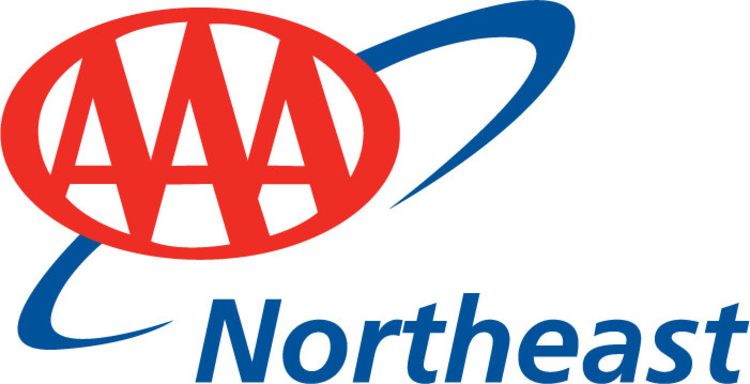

Answers to Your Insurance Questions When Buying a New Car
Is there a difference when buying insurance for a new car vs. a used car? Lenders can request specific coverages that could increase the cost of insurance. For example, auto loan companies require a vehicle to carry collision and comprehensive coverage.
Depending on your budget, buying used gives you some flexibility in regard to coverage, enabling you to have a bit more control over your premium as opposed to buying new. This decision becomes especially important if you have a teen driver on your policy who may drive up insurance costs. Teens are statistically the riskiest drivers on the road.
How about when leasing a car?
When leasing a vehicle, be sure to consider loan/lease, also known as guaranteed asset protection or GAP coverage, as this provides an additional cushion in an event that the vehicle is declared a total loss. This coverage would pay the difference between the actual cash value of your vehicle and the unpaid balance on your loan or lease in a covered total loss scenario.
Keep in mind that leased vehicles are owned by the leasing company, and it will want certain needs met for insurance coverage, such as requiring a higher limit of liability coverage.
How can you prepare for the dealership?
When buying a vehicle from a dealership, be sure you have either already spoken to your insurance company to let them know you may be purchasing a new car soon or have your agent’s phone number on hand.
Once you have a vehicle picked out, the next step will be getting that vehicle added to your insurance policy so that the finance company will have the information it needs to complete the loan. Having your insurance info on hand at the dealership will make for a more seamless transaction while completing your new vehicle purchase.
Do you need to update your insurance before you can drive off the lot?
Yes! This should be done before leaving with your new vehicle. You may also want to consider obtaining a rough quote from your agent prior to making your buying decision. This will allow you to balance your budget accordingly if your insurance premiums increase due to this purchase.
Learn how much you can save when purchasing a new or used car through the AAA Auto Buying Program.
Is the insurance rate higher for a new car?
Not necessarily. There are so many different factors that are taken into consideration when rating a vehicle. The manufacturer’s suggested retail price and safety features, such as airbags, anti-lock brakes and lane-departure warnings, can affect the insurance rate. Other factors, such as the community where the vehicle will reside, your driving record and anticipated annual mileage, can impact the premium as well
Understanding a Car Insurance Policy

Insurance policies can feel like they are written in a foreign language. While your insurance agent can help you cut through the jargon, familiarizing yourself with these essentials can ensure nothing gets lost in translation.
THE BASICS
Every car insurance policy includes limits and deductibles.
Limits are the extent to which a policy protects a driver. Limits are often expressed in the following manner: A/B/C. “A” is the limit of what an insurance company will pay for bodily injury to a single person if the insured driver is at fault in a traffic incident. “B” equals the total amount an insurance company will pay per incident for bodily injury if an insured driver is at fault. “C” is the total amount an insurance company will pay for property damage, such as damage to another motorist’s vehicle, if the insured driver is at fault. Some drivers will purchase umbrella coverage to safeguard themselves against claims that exceed basic auto insurance limits.
Deductibles are amounts drivers must pay out of pocket before their insurance companies step in. Accepting a policy with a higher deductible can often lower premiums as it decreases what an insurance company may have to pay following an accident.
The term is the period your car insurance policy is in effect.
A claim is a request for an insurance company to issue payment per the terms of your car insurance policy.
TYPES OF COVERAGE
Liability protection is the foundation of an auto insurance policy. It protects drivers against damage they inflict upon other people or property. Nearly every state mandates drivers have a minimum level of liability protection.
Uninsured or underinsured motorist coverage is designed to protect you from drivers who don’t have insurance or when the damages to you or your property exceed the limits of their insurance. This coverage is optional coverage in some states and mandatory in others.
Personal injury protection is a requirement in some states. It covers medical bills and may cover other costs for drivers and their passengers after an accident regardless of whether they were at fault.
Collision coverage protects your vehicle should it strike another object, like a wall, tree or vehicle. It’s optional under state law but is often a requirement for anyone financing a vehicle purchase. Lenders require coverage as a way of protecting their investment. If a borrower defaults on an auto loan, the lender needs the vehicle to recoup its investment and a vehicle in bad shape isn’t worth as much. Some drivers who carry collision coverage consider dropping it when the cost of the protection exceeds the value of their vehicles.
Comprehensive coverage is optional under state law but is often a requirement for drivers who’ve financed vehicle purchases. This covers just about any other damage to vehicles, such as fire, hail, vandalism, flood and theft.
Premiums
Premiums are what drivers pay for a car insurance policy. A variety of factors affect premiums, including the following.
Your car: The more expensive your car, the more expensive your repairs and insurance rates may be.
Your driving habits: The more you drive, the higher your chance of being in a crash, and greater risk typically means higher premiums.
Where you live: People who live in urban areas usually have higher premiums because of the higher risk of accidents, theft and vandalism.
Your driving record: Someone who has been in multiple incidents or has multiple moving violations is a statistically greater risk than someone with a clean driving record. Premiums follow accordingly.
Your coverage: Accepting a higher deductible can lower your premium because it decreases what your insurance company could be forced to pay. Having higher limits or optional coverage, like collision, on the other hand, can increase what an insurance company may have to pay, which can mean higher premiums.
Credit rating: California, Hawaii and Massachusetts are the only states where insurance companies cannot use drivers’ credit ratings to influence auto insurance premiums.
Insurance Discounts
Always ask your agent if there are any discounts available to you. Depending on the state where you live and your insurance carrier, you may be eligible for savings, such as:
- Discount for bundling home and auto insurance policies.
- Payment plan discounts for paying in full or switching to automatic monthly deductions.
- Multi-vehicle discount.
- Veteran discount.
- Auto club discount.
- Good driver discount.
- Good student discount.
- Rate reductions for safety features on your car.
In some states, completing a defensive driving course could also help lower your rate and/or reduce points from your driving record.
10 Things Your Auto Insurance Agent Wants to Know About You

When you request a car insurance quote, the insurance agent will ask you many questions. Some questions can seem invasive, but they are a normal part of the process and are needed to provide you with the best coverage and rate. Make things easier by preparing to provide the following details.
Where do you live? When insurance companies determine the cost to insure a particular vehicle, they consider the state in which it is registered as well as the ZIP code. City residents generally pay more for their insurance than those who live in rural areas, and suburban residents fall somewhere in between. This is because you are more likely to be involved in a collision in high traffic areas and are at an increased risk for theft and vandalism.
Instead of simply assigning greater risk to residents of metropolitan areas, auto insurers look at the car insurance claims in your ZIP code and surrounding areas. The claims rates can vary greatly in neighboring towns, which means you could pay more for your insurance than someone who lives right down the road.
Do you own your home? Homeownership may seem completely unrelated to auto insurance, but you will be asked if you rent or own the place where you live. Viewed as an indicator of stability, ownership may mean that you will pay less than a renter. If you currently rent, make sure to notify your insurance company if you eventually purchase a home.
Are you interested in bundling your home and auto insurance? Companies that offer home and auto insurance will usually offer you a discounted rate when you bundle policies. If you own a home, this is a great way to save additional money.
What vehicle are you insuring? Provide details about the make, model and year of the car you are insuring. If you proceed with securing coverage, you will need to provide the vehicle identification number as well. Insurance companies will factor in the cost of the vehicle and its parts, safety ratings and price when determining your premium. Cars that have safety features such as parking assistance, rearview cameras and stability control reduce the chance of accidents.
Does your car have GPS or other location-tracking technology? Vehicles that have GPS or other location-tracking technology are less expensive to insure, as there is a greater chance that they will be recovered if stolen. Tracking systems can pinpoint your vehicle and often track it in real time, providing valuable information that can be used by police to retrieve it. If you have signed up for a vehicle tracking service, make sure to inform your auto insurance provider.
Do you own or finance your car? Drivers who own their car outright have the option to purchase more coverage but are not required to do anything more than state law mandates.
If your car is leased or financed, the lending institution will require you to have comprehensive and collision coverage on top of liability insurance.
What is the car’s primary use? Certain types of driving such as daily commutes to work or school put your car at greater risk for accidents. Explain whether you will be using your car primarily for getting to and from work and business or for recreation, such as weekend drives and trips to the beach.
Who lives in your household? Auto insurance policies typically cover individuals who live in the same household with permission to drive the insured car. If you live with teen drivers, this will also be factored into your premium, as they are considered riskier to insure.
How is your driving record? Your past driving activity is a good predictor of the risk you pose as a driver.
Insurance companies will want to see your motor vehicle report so that they can determine your level of risk.
The more instances of accidents and violations you have, the more you can expect to pay for future insurance. Depending on the state where you live, you can take the AAA Defensive Driving Course to reduce points from your license and possibly qualify for an auto insurance discount.
What coverage are you seeking? This question is likely one of the most important for you as a driver. Discuss liability, collision and comprehensive coverage as well as any specific needs you may have so that you secure the best protection for you and your vehicle. Find out about roadside assistance as well, so you are prepared during an emergency.


